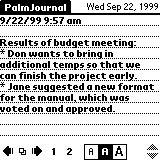The topic of innovation is one that gets a lot of air time within the social circles that I’ve found myself in.
Allow me to begin with two lists on the matter.
To start us off, a list of words/phrases that often get associated with it – “sexy”, “cool”, “visionary”, “never been done before”, “creative”, “overnight success” and “crazy”. The list goes a lot longer and grows far more absurd that I am comfortable describing. But you should be able to extrapolate on that trajectory with minimal effort.
The next is a list of actions that almost certainly disqualifies you of the innovation badge – “learning from what others have done”, “reusing components”, “focus”, “watching the bottom line”, “defining the problem thoroughly”, and adopting any sort of formal, structured, even remotely rigid “engineering” approach to coming up with a solution. Again, far from comprehensive, but sufficient to launch you in the right direction.
What gets me about these lists is how it is treated as a checklist for what innovation looks like. Failing to check off any of this items earns one a spot in the “not innovating enough” bucket. Very rigid – considering we’re gunning for innovation.
Try tell it to the guys who have been at it for 8 years before coming up with Angry Birds. Tell that to the Japanese engineers whose rigid building codes saved thousands if not millions of lives. The fact of the matter is that the bits that gets celebrated, wow-ed at, and gets to strut up the spot-lit stage to receive the prize is merely the tip of the innovation iceberg. The majority of it actually lies beneath the the icy cold waters – execution, iteration, engineering day after day.
Maybe I am just tired of firstly trying to live up to a certain narrow-minded brand of innovation, and secondly having the mundane, routine, structured predictabilities dissed just because we’re a privileged, spoiled, attention deficient generation who have very little affinity towards hard work and very little regard for the legacy that the generations past have afforded us.
If that is innovation, that I want no part in it.
And yes, I am having a bit of a vent.



